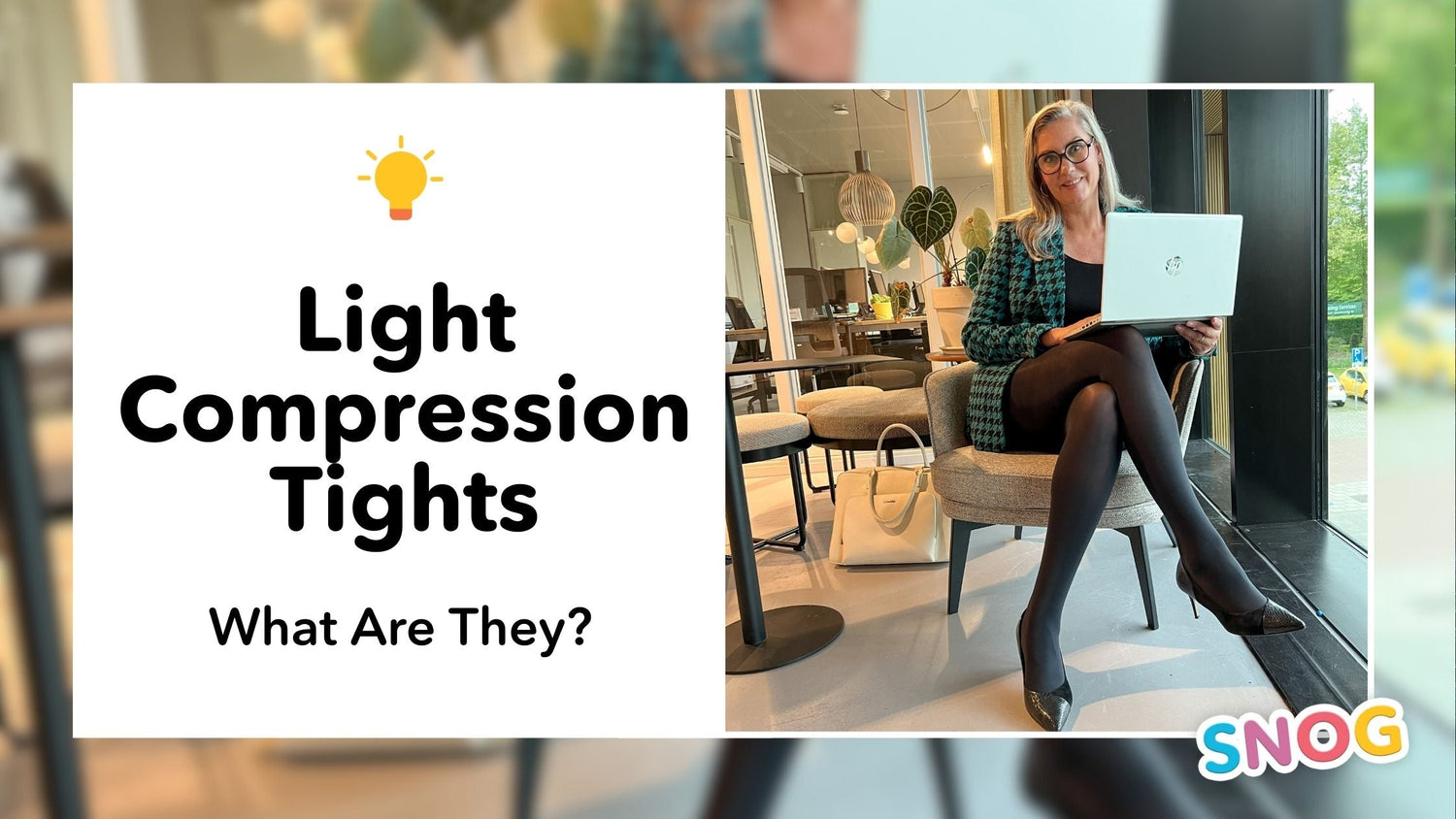Light compression tights, also known as mild or low-level compression tights, are a type of garment that provides a lower level of compression compared to higher compression options. They use light pressure to help promote better circulation in the legs that can help reduce leg fatigue, mild pains, discomfort and swelling.
Light compression tights are generally considered suitable for individuals without significant underlying medical conditions. If you have specific medical concerns or need higher levels of compression, it's best to consult with your doctor or a healthcare professional who can guide you in choosing the appropriate compression level and garment for your specific needs.

What do compression tights do?
Wearing light compression tights, stockings or socks can help reduce pain and swelling and promote circulation in your legs. They do this by compressing the blood vessels making it easier for blood to flow better. This can be beneficial for those who experience mild leg fatigue, discomfort or swelling.
One of the primary functions of light compression tights is to improve circulation. By applying gentle pressure to the legs, these tights help promote better blood flow, aiding in the efficient transport of oxygen and nutrients to the muscles. This can be particularly advantageous for individuals who experience mild leg fatigue, swelling, or discomfort. The compression helps support the veins and muscles, preventing blood pooling and reducing the feeling of heaviness or tiredness in the legs.
When should I wear compression tights?
Compression tights can be beneficial to many different people in a variety of situations. Different levels of compression are better for different scenarios, so be mindful that Snag Huggy tights provide light compression, not medical grade.
People with jobs that involve long periods of standing or sitting, such as healthcare workers, office employees, teachers, retail workers etc may benefit from wearing compression tights to help prevent leg fatigue, swelling and discomfort associated with prolonged static positions.
Compression tights can be used by athletes and active individuals to help improve muscle recovery, reduce muscle soreness and enhance performance while being active. Light compression tights are particularly useful for providing support during low-impact activities. Whether it's walking, yoga, or light exercise, these tights offer a comfortable fit and assist in reducing muscle vibration. This can enhance muscle efficiency, decrease muscle fatigue, and contribute to improved performance and overall comfort during physical activity.
Compression tights are also popular for travellers on long flights or other extended periods of sitting as they help to prevent leg swelling and improve circulation. With a lack of room on flights as well as extended periods of inactivity, there is a risk of health issues like deep vein thrombosis and blood clots as well as swelling and general discomfort.

Is it good to wear compression tights all day?
Wearing light compression tights all day can be beneficial for some individuals, but it depends on personal circumstances and comfort. Light compression tights exert a mild level of pressure on the legs, promoting improved circulation and reducing leg fatigue.
If you don't have any underlying medical conditions and find them comfortable, wearing light compression tights throughout the day can provide ongoing support and help prevent minor leg conditions. However, it's essential to listen to your body and remove the tights if you experience discomfort, pain, or numbness. Additionally, maintaining good hygiene and following the manufacturer's care instructions is also really important for skin health.
Consulting with a healthcare professional can offer personalised advice based on your specific needs and ensure that wearing light compression tights all day is suitable for you.
Are compression and support stockings the same?
Compression tights and support stockings are similar in their purpose of providing support and compression to the legs, but they do have some differences.
Compression tights are garments that cover the entire leg, including the feet, and provide graduated compression throughout the legs. They are typically made of elastic or spandex materials and resemble regular tights or leggings. Support stockings, also known as support hose or compression stockings, are primarily designed to provide graduated compression to the legs. They come in various lengths, including knee-high, thigh-high, and pantyhose styles. Support stockings are often made of elastic or spandex materials as well. They are commonly used to improve circulation, relieve symptoms of leg swelling and fatigue, and prevent or manage conditions such as varicose veins, spider veins, and deep vein thrombosis (DVT). Support stockings tend to be more medical and prescribed by a doctor.
The choice between compression tights and support stockings depends on personal preference, the specific needs of the individual, whether there is a medical need and the coverage required for their particular condition or activity.

When should you not wear compression tights?
There are certain situations when it is not advisable to wear light compression tights. These include if you have arterial circulation problems, congestive heart failure, peripheral neuropathy, or other medical conditions that may require specialised compression garments or modifications to compression levels. It is also important to avoid wearing light compression tights over open wounds, ulcers, or skin infections to allow for proper healing. If you have known allergies or sensitivities to the materials used in compression tights, or if you experience extreme discomfort, pain, or numbness while wearing them, it is best to refrain from using them.


0 comments